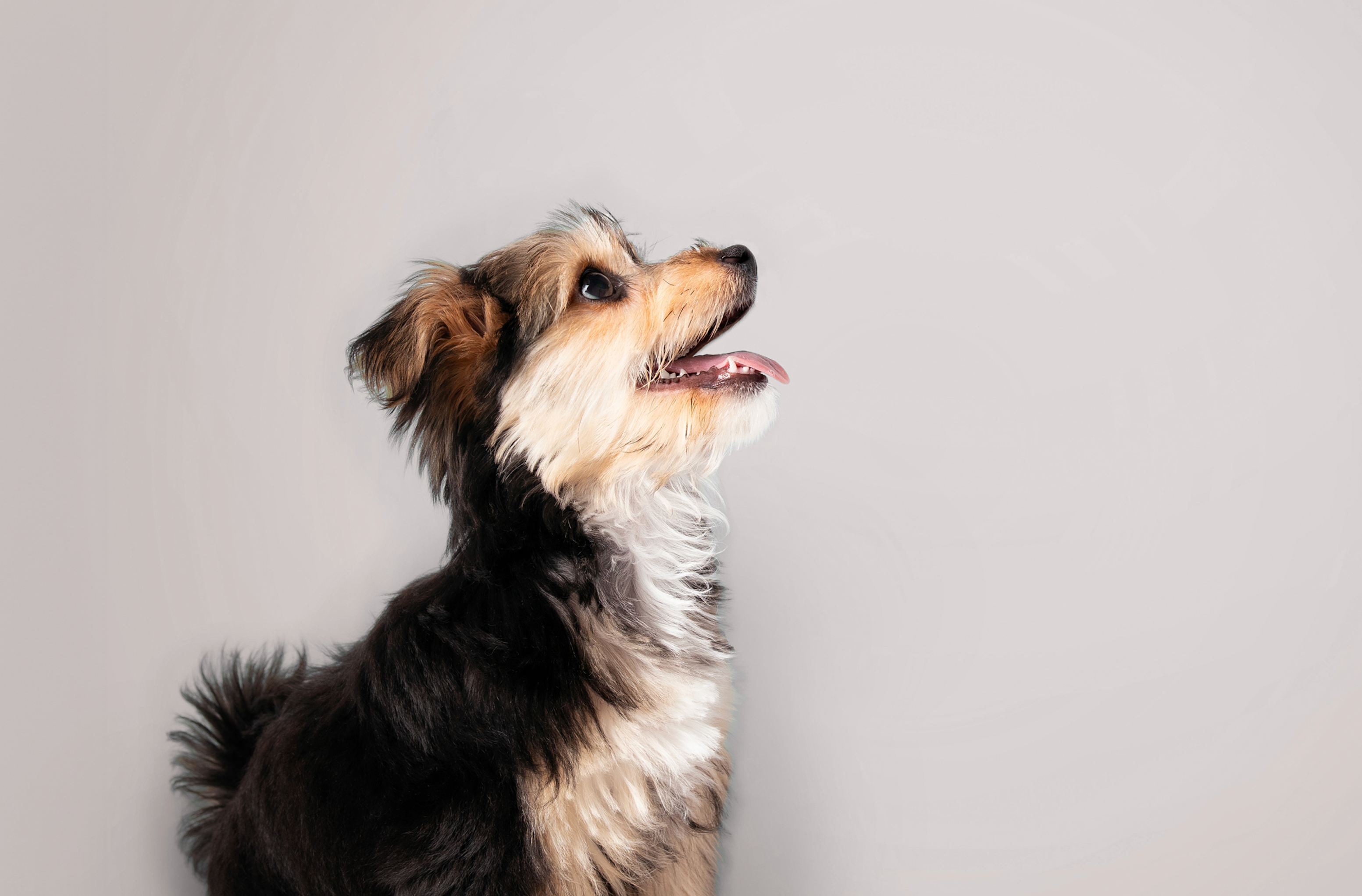It’s always important to feed your dog the proper amount of food — but when it comes to how often you should feed a puppy, getting the amount and frequency right is especially crucial. Why? Your puppy’s bones, muscles, brain cells, and tissues are all still developing, and you want to make sure they get the proper nutrition so that they can grow up to be a healthy, happy adult dog.
Too few or too many calories, over supplementing, or nutrient deficiencies can all be harmful to your pup in the long run, so knowing how often you should feed a puppy is an important part of caring for your rapidly-growing little furball.
Feeding your puppy a standard dog food won’t fulfill all of their nutritional needs, so we’ve made this guide to help you understand your puppy’s specific nutritional requirements — and how to meet them through every stage of their development.
Our Puppy Feeding Guide
Regardless of age, it’s important to establish a feeding schedule for your pup. Dogs thrive on a routine — plus, having set feeding times will help with potty training, as you’ll have a better sense of when your puppy needs to go to the bathroom.
Wondering how many times a day should a puppy eat? Read on for details by age.
0 - 6 Months Old
Most puppies are fully weaned from their mom between six and eight weeks old. Once weaned, your puppy should get three scheduled feedings per day.
Feed them first thing in the morning when you get up, then at intervals of 8-12 hours throughout the day. If more than 12 hours pass between your pup’s meals, their stomach could become hyperacidic and cause them to get nauseous. You wouldn’t want your puppy to get sick!
Take the total amount of food your puppy needs per day based on their weight, then divide that amount into three daily feedings. If you’re wondering, “How much should a puppy eat?”, you can usually determine this by referring to the label on the back of your puppy’s food.
6 - 12 Months Old
When your puppy is around six months old, decrease the number of daily feedings to twice per day — one in the morning, and one in the evening. Again, you’ll want to take the total amount of food your puppy needs in a day, then divide it into two meals.
Over 1 Year Old
Once your puppy has reached maturity, you can choose to feed them either once or twice per day. How do you know when your pup’s fully matured? For many puppies, this occurs around their 1st birthday (some large breeds take 18 months to 2 years to mature — research your puppy’s breed for more details).
Choose a daily feeding schedule that works best for you and your newly-grown dog. At this point, you should also transition them to adult dog food. Puppy food has more calories than adult dog food, so continuing to feed your dog the baby stuff could cause them to become overweight.
Remember, if you’re confused about the amount of food your dog should eat each day, you can always refer to the feeding instructions on your dog’s food packaging, or reach out to your vet with questions.
Even as your puppy reaches adult doghood, it’s important to stick to a regular feeding schedule. Keeping a routine will help your dog learn what to expect each day, which can help them feel calm and avoid getting anxious.
Giving Your Puppy A Balanced Diet
Healthy puppies can burn twice as many calories as an adult dog — so it’s important that your puppy’s diet is balanced, and meets their high energy needs. A good puppy food should be:
- High in calories
- Rich in protein
- Packed full of essential nutrients
- Easy to chew and swallow
Your puppy’s food should be specifically formulated for puppies, to ensure that it fits their needs as a young and growing dog.
There are lots of different puppy foods to choose from, so finding the right one for your canine companion can feel pretty confusing at times. Jinx is formulated with the high quality ingredients and essential nutrients your puppy needs to thrive, and zero fillers.
What Type Of Food Should I Feed My Puppy?
There are many different types of dog foods to choose from. Wet, dry, or grain-free. Foods made with fish, rice, or vegetables. Special formulas for small, medium, or large breed dogs. How’s a puppy parent to choose?
When in doubt, Jinx Cage-Free Chicken Puppy Food is a great option. It’s specially formulated to help your puppy build a strong nutritional foundation for a healthy, happy life. Jinx puppy food is made with cage-free chicken to support your puppy’s growing muscles, whole grains for sustained energy and healthy digestion, and essential vitamins and minerals to support their developing brain and heart functions.
Jinx puppy food is also includes:
- Calcium: Essential for the development of strong bones and teeth, and a crucial part of your puppy's diet to support healthy skeletal growth.
- Phosphorus: Vital for bone health, and plays a significant role in energy production and muscle function.
- DHA: An omega-3 fatty acid that’s critical for brain and eye development, helping your puppy grow into a sharp and alert adult dog.
Is Wet Or Dry Food Better?
Wet food or dry food? While each has their specific benefits, ultimately the choice is up to you (and your puppy’s palate).
Dry food is a common choice, because it’s convenient and packs a lot of nutrition into a smaller volume. However, some pups prefer the taste and texture of wet food. Jinx Cage-Free Chicken Puppy Food combines the convenience of dry food with an irresistible, savory taste puppies love. If your puppy finds dry food hard to chew, you can always add a small amount of warm water to it to soften it up.
You can feed your puppy a diet of all dry food, all wet food, or a combo of both. You may choose to divide their daily meals into a wet puppy food meal and a dry puppy food meal, or opt to combine both wet and dry food within the same meal. Using wet food as a meal topper over dry food can be a great option for picky eaters. If you don’t use the entire container of wet food when you open it, be sure to refrigerate it and make sure your pup consumes the rest within 24 hours.
Another consideration: if you have a large breed dog, you'll need to feed them a larger volume of food. Feeding them wet food alone may not be the most practical option, so again, mixing wet and dry foods can come in handy here.
Dry food is more energy dense than wet food, so the portions may look a lot smaller. Don’t second guess yourself or be tempted to overfeed your puppy — remember, always stick to the suggested feeding amount on the food packaging, or consult with your vet about how much to feed your puppy.
Can I Give My Puppy Treats?
Good dogs deserve a treat — so of course it’s okay to treat your puppy from time to time, especially when they show progress during training. Just remember: as a general rule, treats should make up no more than 10% of your dog’s diet.
It’s best to give your puppy treats with healthy ingredients and no added fillers like wheat, soy, or corn. Avoid feeding them table scraps — these add unnecessary calories to your puppy’s diet, and some human foods could even be harmful to them.
Jinx Beef Training Treats and Chicken Training Treats are great for puppies because they’re low in calories and packed with natural ingredients to support your pup’s bones, muscles, and digestion. Each treat has less than two calories, making them perfect for repeated treating during training sessions with your puppy.
Puppy Feeding Tips
Follow these tips to keep both you and your puppy happy at mealtime:
- Avoid feeding your puppy immediately before or after exercise (doing so may upset their stomach).
- Find a quiet spot where your pup can chow down in peace, and won’t be disturbed by other pets, children or adults.
- Your puppy might make a mess while eating. Place a mat under their bowl, and try to feed them in a space that’s easy to clean.
- Treats should not make up more than 10% of your puppy’s diet.
- Dry food is more energy dense than wet food, so the same portion may look a lot smaller when weighed. Stick to the instructions on the food packaging, and don’t be tempted to overfeed your puppy.
- If you feed your puppy wet food, serve it at room temperature — the smell will be more appealing for them.
- Your puppy may find the kibble pieces in dry food hard to chew. If this is the case, just add a small amount of warm water to soften them up.
- Due to your puppy’s smaller portion sizes, you probably won’t use cans or pouches of wet food as fast as you intend to. Refrigerate any open wet food and use the rest within 24 hours.
- Always make sure that your puppy has access to clean, fresh water.
- Spaying or neutering your puppy will reduce their daily energy requirements — meaning they’ll require slightly less food. Ask your vet for more advice about this.
- Most breeds will need to be transitioned to an adult dog food at 1 year old.
The Takeaway
So, how many times a day should a puppy eat? As discussed above, it depends on their age and stage of development. Once you find the right food for your puppy and set a meal plan based on their age and needs, your little pal will settle into the habits you set for them. From then on, just keep an eye on your puppy’s eating habits and behavior, and let your vet know if anything changes.
Otherwise, just focus on enjoying your time with your puppy — playing with them, training them, and maybe slipping them the occasional puppy treat as a reward every once in awhile.
If you’ll soon be welcoming a new puppy into your family, the Jinx Puppy Essentials Starter Pack has everything you’ll need to start off on the right foot ( ... or paw?). With our Puppy Chicken, Brown Rice, and Sweet Potato Kibble, Chicken and Pumpkin Topper, Beef Training Treats, and Chicken Jerky Bites, your pup will have everything they need to grow up healthy, happy, and strong.

